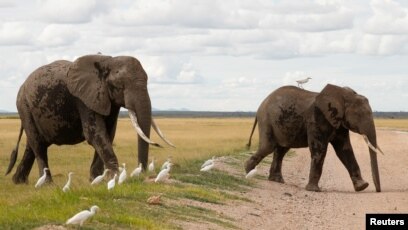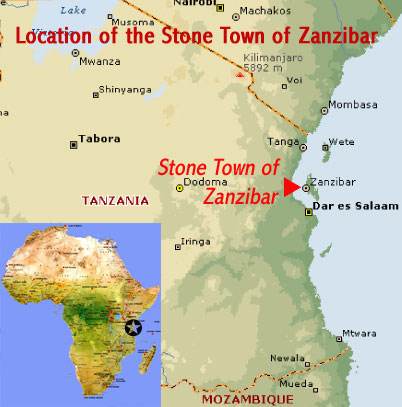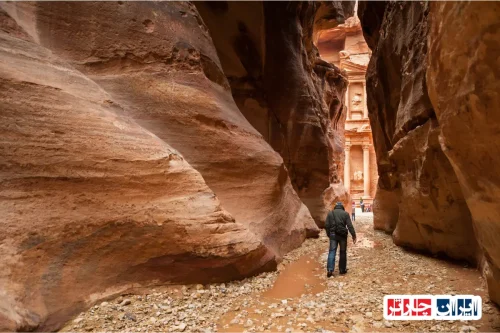Discover the Wonders of Amboseli National Park Kajiado County Kenya: A Comprehensive Guide to One of Africa’s Most Iconic Wildlife Destinations
Amboseli National Park Kajiado County Kenya stands out as a premier safari destination renowned for its breathtaking landscapes, diverse wildlife, and cultural heritage. Located in the southern part of Kenya, this park offers visitors an unparalleled opportunity to witness majestic elephants roaming freely against the backdrop of Mount Kilimanjaro, creating a truly iconic scene that captures the essence of East Africa’s wilderness. Spanning an area rich in ecological significance, Amboseli is not only a haven for wildlife enthusiasts but also a vital site for conservation efforts and scientific research. The park’s expansive plains, swamps, and acacia woodlands support a wide variety of species, including lions, cheetahs, giraffes, and over 400 bird species, making it a paradise for nature lovers and birdwatchers alike. Visitors can enjoy game drives, cultural visits to Maasai communities, and eco-tourism activities that promote sustainable development and environmental awareness. As a key part of Kenya’s national heritage, Amboseli National Park Kajiado County Kenya continues to attract travelers from around the world seeking authentic wildlife experiences and a deeper understanding of East Africa’s rich biodiversity and cultural diversity. For those planning a safari adventure, exploring this remarkable park offers a unique blend of scenic beauty, wildlife encounters, and cultural immersion that will leave lasting memories and inspire conservation-minded travel.
Learn more about this extraordinary destination and plan your visit to Amboseli National Park Kajiado County Kenya today by exploring our detailed guides and travel tips. Discover how this protected area plays a crucial role in preserving Kenya’s natural heritage and supporting local communities through responsible tourism. Whether you are an avid wildlife photographer, a cultural explorer, or simply seeking a peaceful retreat in nature, Amboseli offers an unforgettable experience that highlights the importance of conservation and sustainable tourism in safeguarding our planet’s precious ecosystems. Dive into the adventure and witness the magic of Amboseli National Park Kajiado County Kenya — a true jewel of East Africa’s wilderness.
Amboseli National Park-Iran Charter
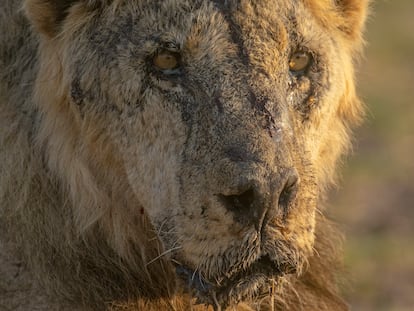
Discover the Wonders of Amboseli National Park in Kajiado County, Kenya
Amboseli National Park in Kajiado County, Kenya, is renowned worldwide for its breathtaking landscapes and abundant wildlife. As one of Africa’s premier safari destinations, it offers visitors an unparalleled opportunity to witness large herds of elephants, lions, cheetahs, and a diverse array of bird species within its expansive savannahs and wetlands. The park’s proximity to Mount Kilimanjaro provides a stunning backdrop, making every game drive a memorable experience. Visitors can explore the park through guided safaris, which are designed to maximize wildlife sightings while ensuring conservation efforts are upheld. The park’s ecosystem supports a rich biodiversity, making it a vital area for ecological research and wildlife preservation. Whether you’re an avid photographer or a nature enthusiast, Amboseli’s scenic vistas and wildlife encounters promise an unforgettable adventure in Kenya’s natural heritage. The park also plays a crucial role in local community development through eco-tourism initiatives, fostering sustainable livelihoods for residents of Kajiado County. Planning a trip to Amboseli involves understanding the best seasons for wildlife viewing, accommodations options, and conservation practices to ensure a responsible visit. This iconic destination continues to attract travelers from around the globe, eager to experience the raw beauty and ecological significance of Amboseli National Park in Kenya.
Why Amboseli National Park in Kajiado County is a Top Conservation Success Story
Amboseli National Park in Kajiado County, Kenya, stands out as a leading example of successful wildlife conservation. The park’s extensive efforts to protect its large populations of elephants, lions, and other species have resulted in stable and thriving ecosystems. Conservation programs focus on anti-poaching measures, habitat preservation, and community engagement, which are essential for maintaining biodiversity. The park’s management collaborates with local communities to promote sustainable practices, ensuring that economic benefits from tourism support conservation goals. Amboseli’s water sources, primarily fed by underground aquifers and seasonal rains, are carefully managed to sustain wildlife populations during dry periods. The park also serves as a vital research site for scientists studying climate change impacts and species adaptation. Its success has inspired similar initiatives across Kenya and East Africa, demonstrating that conservation and tourism can coexist profitably. Visitors play a crucial role by adhering to park rules, supporting local conservation projects, and spreading awareness about the importance of protecting this unique habitat. The ongoing efforts in Amboseli highlight the potential for balancing ecological health with community development, securing its status as a model for wildlife preservation in Kenya.
The Rich Birdlife of Amboseli National Park in Kajiado County, Kenya
Amboseli National Park in Kajiado County, Kenya, is a birdwatcher’s paradise, hosting over 400 bird species that thrive in its diverse habitats. From waterfowl and raptors to migratory birds, the park offers a vibrant avian community that contributes significantly to the local ecosystem. Notable species include the African fish eagle, herons, storks, and kingfishers, which are often seen along the wetlands and lakes within the park. The seasonal migration of birds from Europe and Asia adds to the park’s ecological richness, providing excellent opportunities for bird photography and scientific study. Bird conservation programs in Amboseli focus on habitat preservation and monitoring populations to ensure the survival of rare and endangered species. The presence of these birds supports ecological balance by controlling insect populations and aiding in seed dispersal. Birdwatching tours are popular among eco-tourists, offering a chance to observe these species in their natural environment. Educating visitors about the importance of avian diversity helps promote conservation efforts and sustainable tourism. Amboseli’s birdlife not only enhances its ecological value but also enriches the visitor experience, making it a key highlight of Kajiado County’s natural attractions.
The Impact of Mount Kilimanjaro on Amboseli’s Ecosystem in Kajiado County, Kenya
Mount Kilimanjaro, located just south of Amboseli National Park in Kajiado County, Kenya, profoundly influences the park’s climate and biodiversity. Its towering presence creates a rain shadow effect, resulting in varied rainfall patterns that support diverse habitats within Amboseli. The mountain’s snow-capped peak feeds underground aquifers that sustain the park’s lakes and wetlands, vital for wildlife survival during dry seasons. The unique microclimates created by Kilimanjaro enable the coexistence of savannahs, swamps, and acacia woodlands, each hosting different species. The mountain also attracts numerous climbers and tourists, boosting local economies and raising awareness about conservation. The ecological connection between Kilimanjaro and Amboseli underscores the importance of transboundary conservation efforts, as the mountain’s health directly impacts the park’s biodiversity. Protecting Kilimanjaro’s glaciers and water sources is essential for maintaining Amboseli’s ecological stability. Sustainable tourism practices and climate change mitigation are critical to preserving this natural link, ensuring Amboseli remains a thriving habitat for generations to come.
Top Wildlife Experiences in Amboseli National Park, Kajiado County, Kenya
Amboseli National Park offers some of the most iconic wildlife experiences in Kenya, making it a must-visit for safari enthusiasts. The park’s vast plains provide excellent opportunities to observe large herds of elephants, often seen crossing the open savannahs with Mount Kilimanjaro as a stunning backdrop. Predators such as lions, cheetahs, and hyenas are frequently spotted during game drives, showcasing the park’s rich predator-prey dynamics. Birdwatchers can enjoy sightings of flamingos, storks, and vultures, especially around the lakes and wetlands. Night safaris and guided walking tours add an adventurous dimension to exploring Amboseli’s wilderness. The best time for wildlife viewing is during the dry season, from June to October, when animals congregate around water sources. Many lodges and campsites in Kajiado County offer luxury and eco-friendly accommodations, providing comfort while minimizing environmental impact. Responsible tourism practices ensure that these wildlife experiences contribute to conservation efforts and local community development. Visiting Amboseli guarantees unforgettable moments immersed in Africa’s wild heart, with opportunities to witness nature’s raw beauty firsthand.
Community Involvement and Sustainable Tourism in Amboseli, Kajiado County, Kenya
In Amboseli National Park, community involvement plays a vital role in promoting sustainable tourism and conservation in Kajiado County, Kenya. Local Maasai communities actively participate in tourism activities, offering cultural experiences such as traditional dances, crafts, and guided safaris, which generate income and foster pride in their heritage. These initiatives help reduce human-wildlife conflicts by promoting coexistence and environmental awareness. Conservation programs often include community-led patrols and habitat restoration projects, ensuring local residents are stakeholders in protecting Amboseli’s biodiversity. Eco-lodges and tour operators prioritize employing local staff and sourcing supplies locally, which boosts the regional economy. Education campaigns aim to raise awareness about the importance of wildlife preservation and sustainable resource use among residents and visitors alike. Supporting community-based tourism ensures that economic benefits are shared fairly, encouraging continued conservation efforts. Visitors are encouraged to engage respectfully with local cultures and contribute to community projects, making their trip impactful beyond sightseeing. The synergy between communities and conservation in Amboseli exemplifies how sustainable tourism can benefit both people and wildlife in Kajiado County.
Best Time to Visit Amboseli National Park in Kajiado County, Kenya
The optimal time to visit Amboseli National Park in Kajiado County, Kenya, is during the dry seasons from June to October and January to February. During these months, wildlife congregates around water sources, making game viewing more accessible and rewarding. The weather is generally clear and cool, providing excellent conditions for photography and outdoor activities. The wet seasons, from March to May and November to December, bring lush vegetation and higher water levels, which support breeding and migration but can make wildlife spotting more challenging due to dense foliage and muddy roads. Planning your visit around these periods ensures a memorable safari experience with abundant wildlife sightings. Accommodation options range from luxury lodges to tented camps, many of which offer special packages during peak seasons. Additionally, visiting during the shoulder months can provide a quieter experience and better rates. Always consider local events, park regulations, and weather forecasts when planning your trip to Amboseli to maximize your enjoyment and safety. Proper timing enhances your chances of witnessing Amboseli’s iconic wildlife and scenic landscapes at their best.
How to Prepare for a Safari Trip to Amboseli in Kajiado County, Kenya
Preparing for a safari trip to Amboseli National Park in Kajiado County involves planning ahead to ensure a comfortable and safe experience. First, choose the right time of year based on your wildlife viewing preferences and weather conditions. Pack lightweight, neutral-colored clothing suitable for hot days and cooler evenings, along with sun protection such as hats, sunglasses, and sunscreen. Don’t forget binoculars and camera gear to capture the stunning landscapes and wildlife encounters. Health precautions include vaccinations and carrying necessary medications, especially for malaria prevention. Booking accommodations and guided tours in advance guarantees availability and access to expert guides who enhance the safari experience. Understanding park rules, such as respecting wildlife distances and avoiding littering, is essential for responsible tourism. Prepare a checklist of essentials, including water bottles, snacks, and personal items, to stay comfortable during game drives. Learning about the park’s ecology and species beforehand enriches your understanding and appreciation of the environment. Proper preparation ensures a smooth, enjoyable adventure that aligns with conservation principles and maximizes your connection with nature.
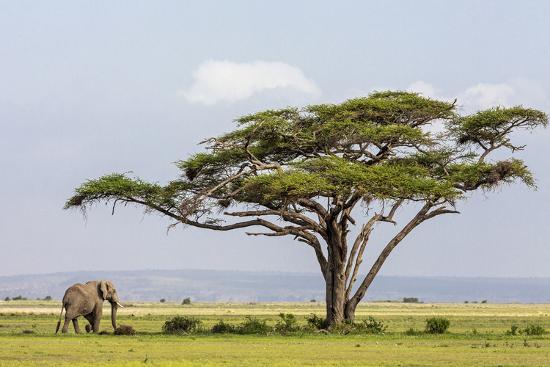
Frequently Asked Questions about Amboseli National Park in Kajiado County, Kenya
- What makes Amboseli National Park a top safari destination?
- Amboseli National Park is renowned for its stunning landscapes, large herds of elephants, and views of Mount Kilimanjaro. Its diverse ecosystems support abundant wildlife, making it an ideal spot for safaris and photography enthusiasts seeking memorable wildlife encounters.
- How does Mount Kilimanjaro influence Amboseli’s environment?
- Mount Kilimanjaro’s towering presence creates microclimates and a rain shadow effect, which influence rainfall patterns and water sources in Amboseli. Its glaciers feed underground aquifers that sustain lakes and wetlands, vital for wildlife during dry seasons.
- What are the best times of year to visit Amboseli for wildlife viewing?
- The dry seasons from June to October and January to February are ideal for wildlife viewing, as animals gather around water sources, making sightings easier. The wet seasons bring lush vegetation but can make spotting animals more challenging.
- What types of wildlife can visitors expect to see in Amboseli?
- Visitors can see elephants, lions, cheetahs, hyenas, giraffes, zebras, and a variety of bird species including flamingos, storks, and eagles. The park is especially famous for its large elephant herds.
- Are guided safaris available in Amboseli?
- Yes, guided safaris are widely available and are recommended for maximizing wildlife sightings. Experienced guides provide valuable insights into animal behavior and park ecology.
- What conservation efforts are in place in Amboseli?
- Amboseli implements anti-poaching measures, habitat preservation projects, and community engagement programs. Collaboration with local communities helps ensure sustainable tourism and wildlife protection.
- How does community involvement support conservation in Amboseli?
- Local Maasai communities participate in tourism activities, cultural demonstrations, and conservation projects, which provide income and foster coexistence with wildlife, reducing conflicts and promoting sustainable practices.
- What accommodation options are available near Amboseli?
- There are luxury lodges, tented camps, and eco-friendly accommodations that offer comfort and proximity to wildlife. Many lodges also prioritize sustainable tourism practices.
- What is the significance of birdlife in Amboseli?
- With over 400 bird species, including flamingos, kingfishers, and raptors, Amboseli is a paradise for birdwatchers. The wetlands and lakes provide critical habitats for migratory and resident birds.
- How does eco-tourism benefit Amboseli and local communities?
- Eco-tourism generates income, creates jobs, and funds conservation projects. It encourages sustainable resource use and helps preserve Amboseli’s unique biodiversity while supporting local livelihoods.
- What are the main threats to Amboseli’s ecosystem?
- Threats include poaching, habitat encroachment, climate change affecting water sources, and over-tourism. Conservation efforts aim to mitigate these risks and protect the park’s biodiversity.
- How can visitors contribute to conservation during their trip?
- Visitors can follow park rules, support local conservation projects, respect wildlife distances, and promote awareness about ecological preservation through responsible tourism practices.
- What is the best way to prepare for a safari in Amboseli?
- Plan your visit during the optimal seasons, pack suitable clothing, bring binoculars and camera gear, and book guided tours in advance. Learning about the park’s ecology enhances the experience.
- What role does Amboseli play in Kenya’s ecological and tourism sectors?
- Amboseli is a flagship conservation area that attracts international tourists, supports local economies, and demonstrates successful wildlife management and community involvement, serving as a model for sustainable tourism in Kenya.
